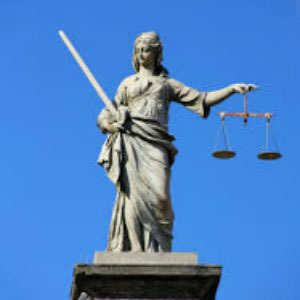The few women who appear before the High Court of Australia have fewer opportunities to speak, according to a recent survey.

A survey published in the article, 'Gender Equality Among Barristers Before the High Court', suggests that female barristers continue to be very nearly invisible in Australia’s highest court, the Australian Women Lawyers (AWL) has said.
According to AWL president Ann-Maree David, the survey demonstrates that female barristers are briefed less than their male peers and are even less likely to be given opportunities to speak.
Acknowledging that a range of complex factors that have played into the “disproportionate underrepresentation by women in the senior ranks of the legal profession” over the last 20 years, Ms David said the study showed that a degree of invisibility prevails for women in law. This is the case despite the growing numbers of women admitted each year, she added.
“The research also speaks to the complex issues of bias and discrimination experienced by women lawyers, as highlighted by the Law Council of Australia in its National Attrition and Retention Study,” Ms David said.
Ms David said the survey, undertaken by Professor George Williams and Daniel Reynolds, is a telling of the experiences of female barristers in all Australian jurisdictions. The findings also support the case for initiatives such as the equitable briefing policy introduced by the Law Council of Australia (LCA) last year.
The LCA policy includes a number of non-mandatory targets that are intended to be met by 2020. Within four years, the policy hopes to see 30 per cent of all matters briefed out to women barristers, and women barristers earning 30 per cent of the total value of all brief fees.
“AWL strongly advocates for the initiatives which promote equality in and before the law. These include the Law Council of Australia’s (LCA) National Equitable Briefing Policy,” Ms David said.
This year, the LCA has also made available CLE training modules for lawyers on subjects canvassing unconscious bias and intersectional diversity.
“These initiatives go some way to addressing systemic and ongoing bias in the profession, but structural changes are also necessary to affect the cultural shift needed to allow women lawyers to achieve their full potential,” Ms David said.
According to the AWL, 60 per cent of today’s law graduates are women, making up 63 per cent of newly admitted lawyers.
The article, 'Gender Equality Among Barristers Before the High Court', will be published in Volume 91, Part 6 of the Australian Law Journal.
A gender normative response to the bench
As an aside, a popular #auslaw Tumblr blog recently drew attention to the following High Court exchange in Smith v The Queen; R v Afford between Chief Justice Susan Kiefel AC, Justice Geoffrey Nettle and barrister Stephen Odgers SC.
MR ODGERS: Of course, your Honour. I am just attempting to respond to the proposition that because you know there is something in the suitcase, the element of intention is met. I just – you can see I am struggling with this. I am saying that cannot be enough.
KIEFEL CJ: We know you are struggling, Mr Odgers.
MR ODGERS: I will cease to struggle. I have attempted, manfully, to respond to that.
NETTLE J:That is gender normative, Mr Odgers.
MR ODGERS: Yes. Gender – I have struggled personally – whatever the word is – “person-fully”.